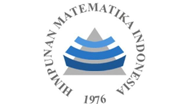Constructing Efficient Frontiers in Cryptocurrency Market Using Long-Run GARCH Volatility
Abstract
Keywords
Full Text:
PDFReferences
X. Zhang, Z. Chen, and S. Wang, “A study of the impact of cryptocurrency price volatility on the stock and gold markets,” Financ Res Lett, vol. 69, p. 106114, Nov. 2024, doi: 10.1016/J.FRL.2024.106114.
F. Aslam, B. A. Memon, A. I. Hunjra, and E. Bouri, “The dynamics of market efficiency of major cryptocurrencies,” Global Finance Journal, vol. 58, p. 100899, Nov. 2023, doi: 10.1016/J.GFJ.2023.100899.
N. Naifar, “Mapping Systemic Tail Risk in Crypto Markets: DeFi, Stablecoins, and Infrastructure Tokens,” Journal of Risk and Financial Management, vol. 18, no. 6, Jun. 2025, doi: 10.3390/jrfm18060329.
M. M. Karim, M. H. Ali, L. Yarovaya, M. H. Uddin, and S. Hammoudeh, “Return-volatility relationships in cryptocurrency markets: Evidence from asymmetric quantiles and non-linear ARDL approach,” International Review of Financial Analysis, vol. 90, p. 102894, Nov. 2023, doi: 10.1016/J.IRFA.2023.102894.
A. Brynjarsson and K. Ágústsdóttir, “Cryptocurrencies in optimized portfolios: a portfolio theory approach The portfolio performance-enhancing capabilities of cryptocurrencies,” 2022.
J. Mednis and S. Palmquist, “PORTFOLIO OPTIMIZATION WITH CRYPTO ASSETS Analyzing the Impact of Investors’ Subjective Views on Portfolio Risk,” 2022.
S. G. Chortane and K. Naoui, “The End of Mean-Variance? Tsallis Entropy Revolutionises Portfolio Optimisation in Cryptocurrencies,” Journal of Risk and Financial Management, vol. 18, no. 2, Feb. 2025, doi: 10.3390/jrfm18020077.
E. Wati, R. Dacesta Barus, N. Aini, B. Nugroho, and R. Fauzi, “Modeling bitcoin price by using Euler-Maruyama method,” 2024. [Online]. Available: http://e-journal.president.ac.id/presunivojs/index.php/JAFRM/index38
G. Zournatzidou, D. Farazakis, I. Mallidis, and C. Floros, “Stochastic Patterns of Bitcoin Volatility: Evidence across Measures,” Mathematics, vol. 12, no. 11, Jun. 2024, doi: 10.3390/math12111719.
C. Magazzino, T. Gattone, and F. Horky, “Economic and financial development as determinants of crypto adoption,” International Review of Financial Analysis, vol. 103, p. 104217, Jul. 2025, doi: 10.1016/J.IRFA.2025.104217.
D. T. A. Nguyen and K. C. Chan, “Cryptocurrency trading: A systematic mapping study,” International Journal of Information Management Data Insights, vol. 4, no. 2, p. 100240, Nov. 2024, doi: 10.1016/J.JJIMEI.2024.100240.
T. Bollerslev, “Generalized autoregressive conditional heteroskedasticity,” J Econom, vol. 31, no. 3, pp. 307–327, Apr. 1986, doi: 10.1016/0304-4076(86)90063-1.
Y. Zhu, S. I. Taasim, and A. Daud, “Volatility Modeling and Tail Risk Estimation of Financial Assets: Evidence from Gold, Oil, Bitcoin, and Stocks for Selected Markets,” Risks, vol. 13, no. 7, Jul. 2025, doi: 10.3390/risks13070138.
R. O. Siaw, E. Dei Ofosu-Hene, and T. Evans, “ELK ASIA PACIFIC JOURNAL OF FINANCE AND RISK MANAGEMENT INVESTMENT PORTFOLIO OPTIMIZATION WITH GARCH MODELS,” vol. 8, 2015, doi: 10.16962/EAPJFRM/issn.
G. M. Castro, C. Klöckl, P. Regner, J. Schmidt, and A. O. Pereira, “Improvements to Modern Portfolio Theory based models applied to electricity systems,” Energy Econ, vol. 111, p. 106047, Jul. 2022, doi: 10.1016/J.ENECO.2022.106047.
E. Samunderu and Y. T. Murahwa, “Return Based Risk Measures for Non-Normally Distributed Returns: An Alternative Modelling Approach,” Journal of Risk and Financial Management, vol. 14, no. 11, Nov. 2021, doi: 10.3390/jrfm14110540.
S. Hetland, R. S. Pedersen, and A. Rahbek, “Dynamic conditional eigenvalue GARCH,” J Econom, vol. 237, no. 2, p. 105175, Dec. 2023, doi: 10.1016/J.JECONOM.2021.09.003.
S. Ampadu, E. T. Mensah, E. N. Aidoo, A. Boateng, and D. Maposa, “A comparative study of error distributions in the GARCH model through a Monte Carlo simulation approach,” Sci Afr, vol. 23, p. e01988, Mar. 2024, doi: 10.1016/J.SCIAF.2023.E01988.
S. Jamaldin and A. Mithu, “Capital Asset Pricing Model (CAPM) Analysis of Tanzanian Public Firms,” Journal of Policy and Development Studies, vol. 17, no. 1, pp. 168–180, Dec. 2024, doi: 10.4314/jpds.v17i1.14.
L. M. De Castro, G. Dhillon, T. Cardão-Pito, M. Crathorne, T. Garcia, and D. Borrego, “MARKOWITZ EFFICIENT FRONTIER AND CAPITAL MARKET LINE-EVIDENCE FROM THE PORTUGUESE STOCK MARKET,” 2017. [Online]. Available: www.european-jms.com
R. Zhang, “Optimizing Investment in the Automotive Industry: A Modern Portfolio Theory Approach with Tesla, GM, and Hyundai,” 2025, pp. 303–316. doi: 10.2991/978-94-6463-652-9_31.
M. Brière, K. Oosterlinck, and A. Szafarz, “Virtual currency, tangible return: Portfolio diversification with bitcoin,” Nov. 01, 2015, Palgrave Macmillan. doi: 10.1057/jam.2015.5.
S. Corbet, B. Lucey, A. Urquhart, and L. Yarovaya, “Cryptocurrencies as a financial asset: A systematic analysis,” International Review of Financial Analysis, vol. 62, pp. 182–199, Mar. 2019, doi: 10.1016/J.IRFA.2018.09.003.
S. Sahu, J. H. Ochoa Vázquez, A. F. Ramírez, and J. M. Kim, “Analyzing Portfolio Optimization in Cryptocurrency Markets: A Comparative Study of Short-Term Investment Strategies Using Hourly Data Approach,” Journal of Risk and Financial Management, vol. 17, no. 3, Mar. 2024, doi: 10.3390/jrfm17030125.
N. Borri, Y. Liu, A. Tsyvinski, and X. Wu, “Cryptocurrency as an Investable Asset Class: Coming of Age,” Oct. 2025, [Online]. Available: http://arxiv.org/abs/2510.14435
D. G. Baur and T. Dimpfl, “Asymmetric volatility in cryptocurrencies,” Econ Lett, vol. 173, pp. 148–151, Dec. 2018, doi: 10.1016/J.ECONLET.2018.10.008.
K. Guesmi, S. Saadi, I. Abid, and Z. Ftiti, “Portfolio diversification with virtual currency: Evidence from bitcoin,” International Review of Financial Analysis, vol. 63, pp. 431–437, May 2019, doi: 10.1016/j.irfa.2018.03.004.
J. Almeida and T. C. Gonçalves, “A systematic literature review of investor behavior in the cryptocurrency markets,” Mar. 01, 2023, Elsevier B.V. doi: 10.1016/j.jbef.2022.100785.
S. Hussain and J. H. Chen, “The return and volatility spillovers among decentralized finance (DeFi) assets,” Res Int Bus Finance, vol. 79, p. 103071, Jul. 2025, doi: 10.1016/J.RIBAF.2025.103071.
J. Yae and G. Z. Tian, “Volatile safe-haven asset: Evidence from Bitcoin,” Journal of Financial Stability, vol. 73, p. 101285, Aug. 2024, doi: 10.1016/J.JFS.2024.101285.
L. Danilo and J. Thelissaint, “Risk and Reward of Crypto Portfolios: A Comparative Assessment of Selection Approaches,” 2025.
DOI: http://dx.doi.org/10.30829/zero.v9i2.25928
Refbacks
- There are currently no refbacks.

This work is licensed under a Creative Commons Attribution-ShareAlike 4.0 International License.
Publisher : Department of Mathematics Faculty of Science and Technology Universitas Islam Negeri Sumatera Utara Medan | |
✉️ Email: zero_journal@uinsu.ac.id 📱 WhatsApp:085270009767 (Admin Official) | |
 |  |  |  |  |



